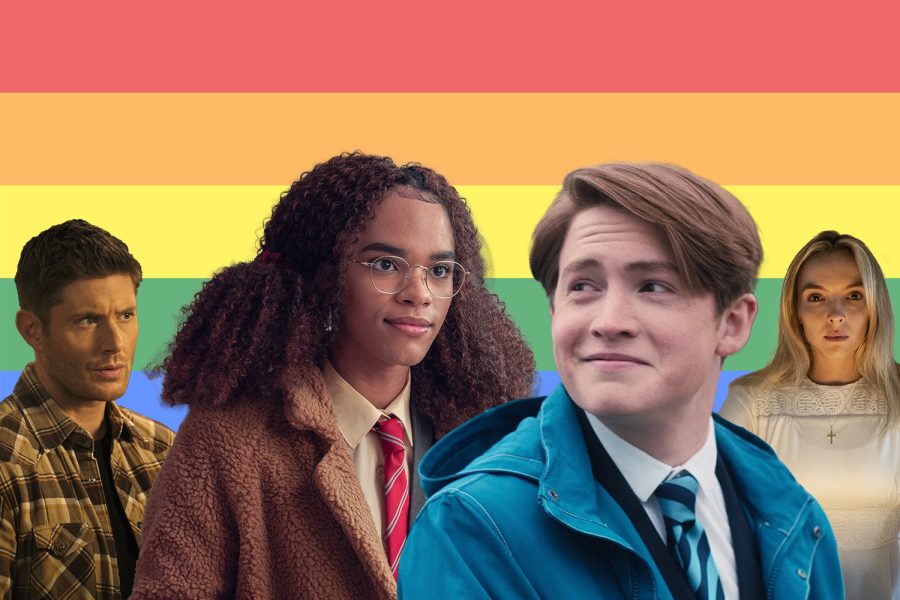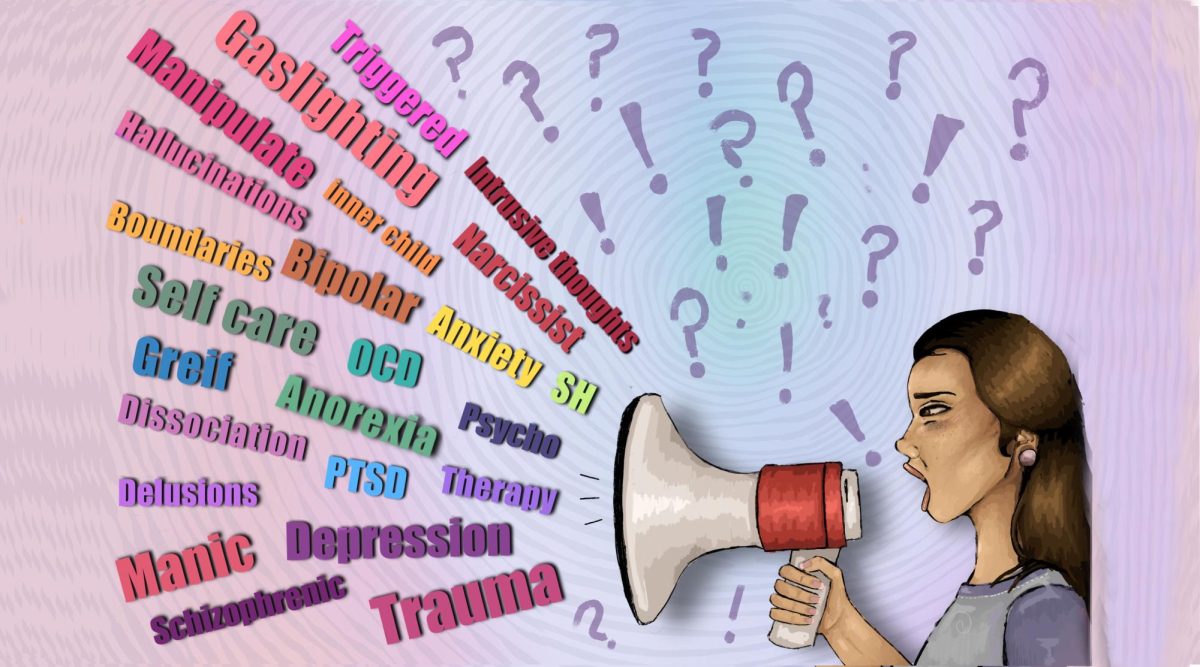Content warning: this article mentions death and contains other sensitive content related to being LGBTQ+.
This article contains spoilers for “Supernatural” and “Killing Eve” and may contain minor spoilers for “Heartstopper.”
As I wrap up my senior project, I want to highlight some of my discoveries.
Deliberate analysis of the media confirmed what I had already suspected. Focusing on the representation of written communication in my first installment and mental health in my second installment, I discovered that effective representation of these topics requires first-hand experience, research, and diversity for genuine authenticity.
Consumers shouldn’t be required to act as media critics for the media to take them seriously. It’s time for writers, actors, producers, and the entertainment industry as a whole, to apply what people have been telling them for years: the media should tell our stories.
In my senior project’s third and final installment, I analyzed a topic I feel particularly connected to LGBTQ+ representation in the media.
When LGBTQ+ history is absent from textbooks and education is far from inclusive, the media is often the only place where queer people have the hope of seeing people like themselves. Because of this, it is imperative for the representation of LGBTQ+ people in the media to be extensive and diverse.
Within the LGBTQ+ community, transgender people are particularly inaccurately represented in the media, especially trans people of color, according to María Valle-Remond, a senior. They emphasize that trans people should be the ones writing their stories.
Emily Mannion, a junior, also advocates for a better representation of trans people. She adds that trans and nonbinary actors should play trans and nonbinary characters to ensure the most accurate portrayal.
“I don’t think there are many characters for young trans people to look up to,” Mannion said. “As someone who discovered a lot about their sexuality from media and characters in television, I believe that seeing people like you represented in television makes finding your place in the world much easier.”
While there has been an increase in and improvement of LGBTQ+ media, it isn’t entirely unproblematic. Repetitive, riddled with stereotypes, and sometimes outright tragic, LGBTQ+ representation in the mainstream media has yet to achieve genuine authenticity.
Nolan Scheetz, a senior, reflects on the state of LGBTQ+ representation.
“The media has, at least on a populist level, failed to portray LGBTQ+ people in a full manner at almost every turn,” Scheetz said. “There are certainly characters that fit the bill, but too many times representation has been used as hollow messaging or gross caricatures relegated to side roles.”
The visual and written media may use queer coding to include LGBTQ+ characters. Instead of explicitly introducing characters as queer, the media codes them as queer.
While queer coding allows queer authors and screenwriters to expand queer representation subtly, there are instances of the mainstream media using it negatively.
For example, queer coding villans can make audiences associate queerness with malice.
When the media uses queer coding to include LGBTQ+ characters instead of explicitly illustrating queer characters, it favors the comfort of non-LGBTQ+ audiences rather than acknowledging queer narratives.
Unlike queer coding, queerbaiting is always negative. Queerbaiting involves hinting at LGBTQ+ representation without actually including it to attract LGBTQ+ audiences.
Further, the media can strip stories with LGBTQ+ representation of happy endings. In fact, LGBTQ+ media can end tragically with the killing of queer characters.
“Supernatural,” a tv show which ended in 2020, combines queerbaiting and killing queer characters in what Mannion describes as a “very bad example” of LGBTQ+ representation.
Just this year, the BBC America’s “Killing Eve,” which had its series finale on April 10, ended with the death of a queer character. Mannion explains that leading up to the finale, the show’s fan base had shown appreciation for the fact that neither of the main queer characters had died.
“I couldn’t believe that in 2022, after years of people complaining about queerbaiting and killing queer characters, a writing team could come to that conclusion,” Mannion said.
Besides negative queer coding, queerbaiting, and killing of queer characters, the use of stereotypes can also contribute to poor LGBTQ+ representation.
There are scores of myths and stereotypes ranging from being simply inaccurate and repetitive to trivializing and dehumanizing the LGBTQ+ people they represent. Valle-Remond lists some harmful stereotypes they see repeatedly.
“The ‘cheating’ bisexual; man-hating lesbian; predatory lesbian; effeminate gay man; white, androgynous, infantilized nonbinary person; [and] gay couples where one of them hides their gayness and is embarrassed are just some of the tropes I see in media,” Valle-Remond said.
The ‘cheating’ bisexual; man-hating lesbian; predatory lesbian; effeminate gay man; white, androgynous, infantilized nonbinary person; [and] gay couples where one of them hides their gayness and is embarrassed are just some of the tropes I see in media.
— María Valle-Remond, senior
Its focus can also impact the quality of LGBTQ+ representation.
For example, many stories about LGBTQ+ people focus on a queer person’s coming out. Rosemary Banks* explains why this is problematic.
“My biggest critique of LGBTQ+ representation is how it is often centered around coming out and its effects on straight characters. This takes the focus away from the actual character and shifts it to the straight characters in the show,” Banks said.
Banks further explains that representation such as this pressures LGBTQ+ viewers to come out and perpetuates the myth that queer people have to come out to be valid.
Valle-Remond is also critical of how the media focuses heavily on LGBTQ+ characters’ coming out. In addition, they said that discussions of trauma, while important, dominate the media, which needs “more queer joy.”
“LGBTQ+ people are so much more than their pain, and especially for younger LGBTQ+ kids, it’s so important for them to be able to see that being LGBTQ+ is not just pain, bullying, sadness, death, or hardship. It’s so much more than that!” Valle-Remond said.
Effective queer media authentically portrays the full lives of developed LGBTQ+ characters.
The webcomic turned graphic novel series “Heartstopper” by Alice Oseman depicts various LGBTQ+ people as primary and secondary characters. Queer author and illustrator Oseman is also the screenwriter and executive producer of the series’ tv show adaption, released April 22.
“‘Heartstopper,’ the book series, is a fantastic example of good representation of my experiences being gay,” Jack Rizvi, a senior, said. “The way in which situations between the main characters Nick and Charlie take place really hit home as to how I’ve felt in similar situations.”
Audrey Wong, a freshman, also highlights the diverse casting, including Yasmin Finney, a trans woman of color. Casting such as this is likely to ensure authentic representation and that more people can see themselves in Finney’s character.
LGBTQ+ representation that resonates strongly with queer people is powerful.
When LGBTQ+ representation in the media continues to be shaped by outdated, demeaning standards, it can be challenging to point out what makes a particular piece of media not sit right with you.
I hope this series has brought us nearer to being able to put into words what isn’t right about current representation and getting our demands met by the mainstream media. We are one step closer to achieving representation that best reflects all of us.
“LGBTQ+ media representation is so important because everyone deserves to feel seen and represented,” Wong said. “LGBTQ+ people who have been looked down upon and discriminated against for so long need to feel safe, seen, and loved.”
*This name has been changed to protect the anonymity of the source in accordance with Carlmont Media’s anonymous sourcing policy.
If you are having thoughts of suicide or experiencing emotional distress, call the National Suicide Prevention Hotline at 1-800-273-8255 (TALK). If you are LGBTQ+, you can also call the Trevor Project Lifeline at 1-866-488-7386 or text START to 678678 for free, confidential counseling. Instant messaging is also available here.













